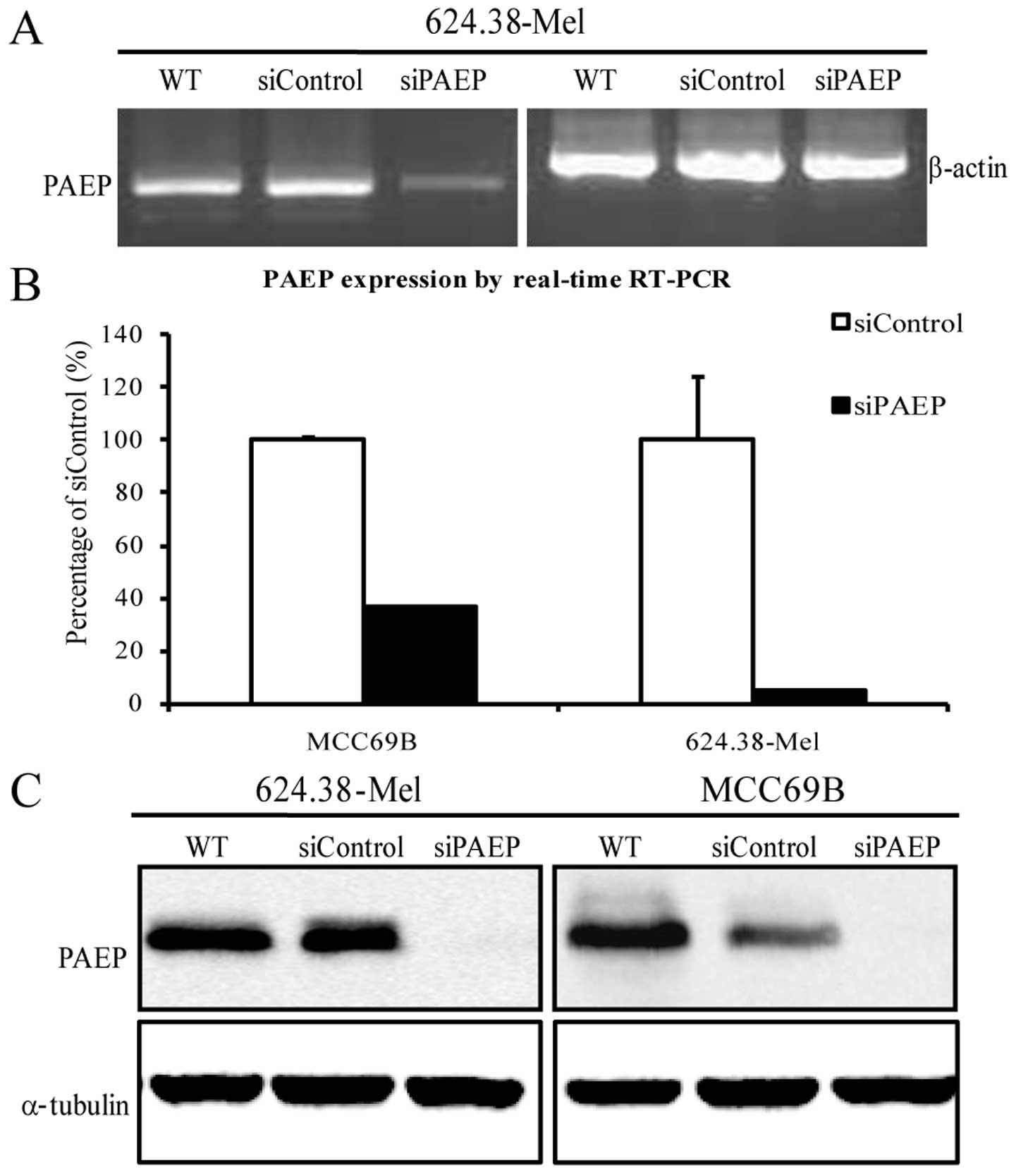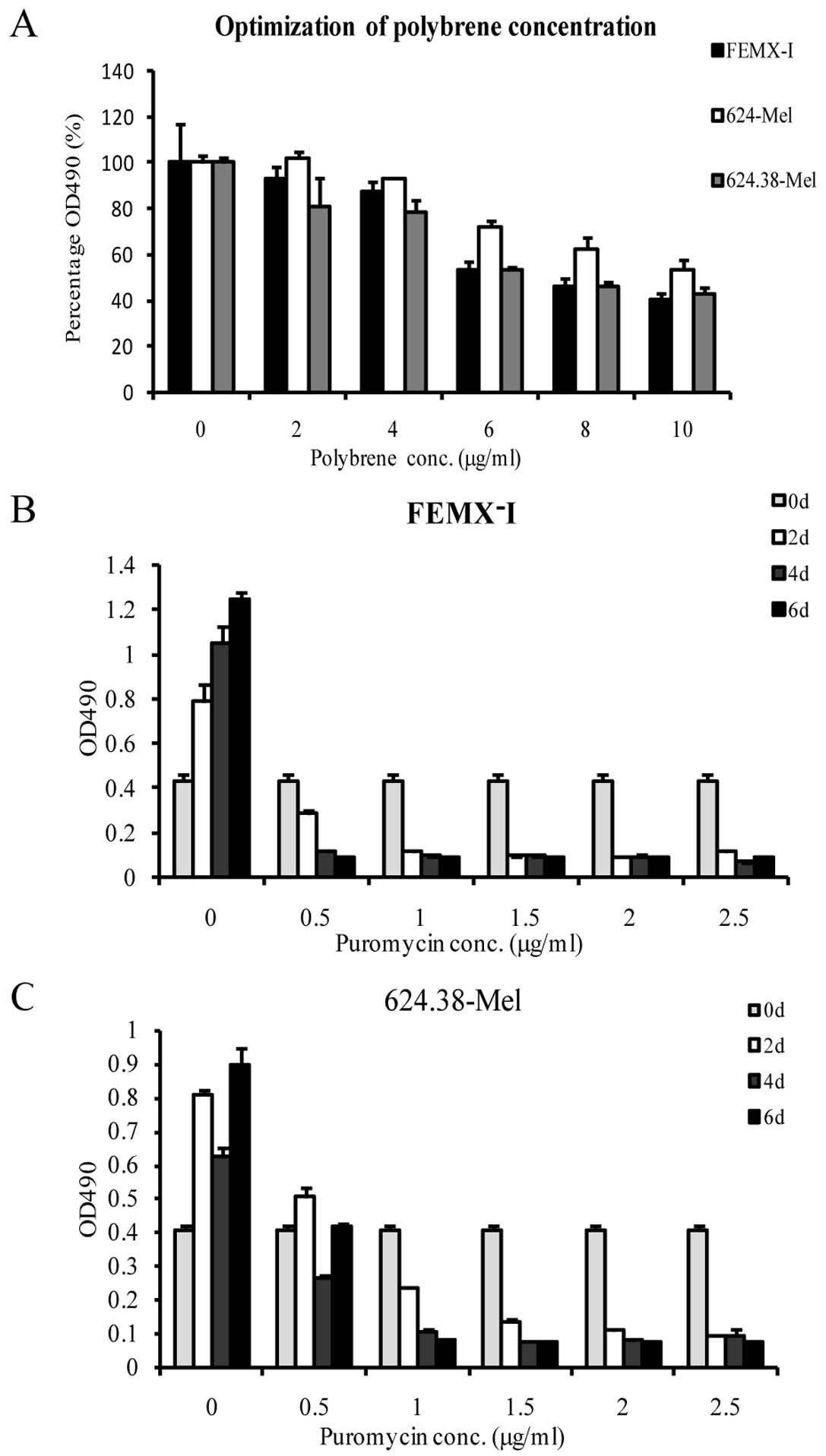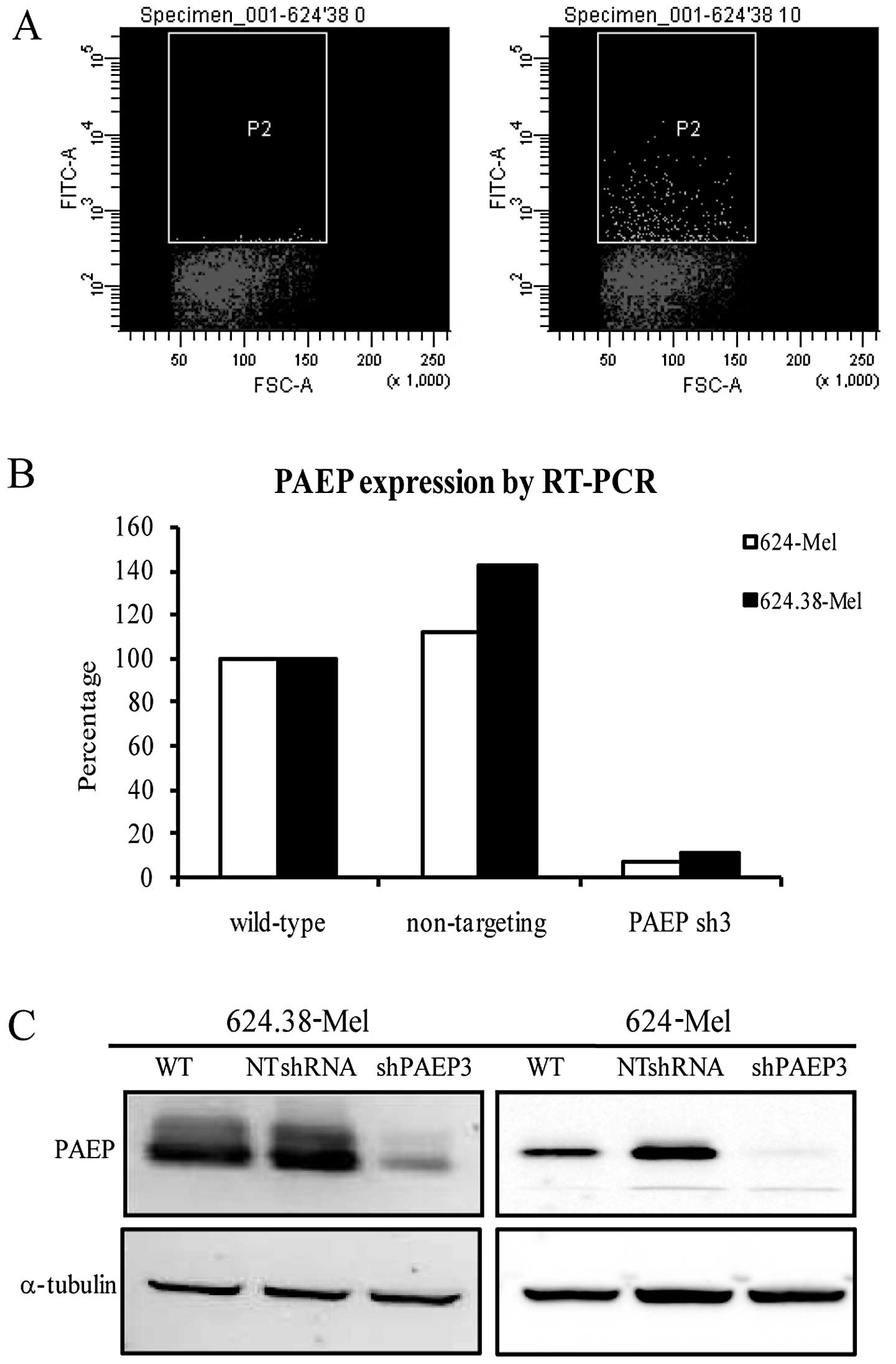|
1
|
Seppälä M, Taylor RN, Koistinen H,
Koistinen R and Milgrom E: Glycodelin: a major lipocalin protein of
the reproductive axis with diverse actions in cell recognition and
differentiation. Endocr Rev. 23:401–430. 2002.
|
|
2
|
Jeschke U, Kuhn C, Mylonas I, Schulze S,
Friese K, Mayr D, Speer R, et al: Development and characterization
of monoclonal antibodies for the immunohistochemical detection of
glycodelin A in decidual, endometrial and gynaecological tumour
tissues. Histopathology. 48:394–406. 2006. View Article : Google Scholar : PubMed/NCBI
|
|
3
|
Richter C, Baetje M, Bischof A, Makovitzky
J, Richter DU, Gerber B, Briese V, et al: Expression of the
glycodelin A gene and the detection of its protein in tissues and
serum of ovarian carcinoma patients. Anticancer Res. 27:2023–2025.
2007.PubMed/NCBI
|
|
4
|
Hautala LC, Greco D, Koistinen R,
Heikkinen T, Heikkilä P, Aittomäki K, Blomqvist C, et al:
Glycodelin expression associates with differential tumour phenotype
and outcome in sporadic and familial non-BRCA1/2 breast cancer
patients. Breast Cancer Res Treat. 128:85–95. 2011. View Article : Google Scholar : PubMed/NCBI
|
|
5
|
Seppälä M, Koistinen H, Koistinen R,
Hautala L, Chiu PC and Yeung WS: Glycodelin expression in
reproductive endocrinology and hormone-related cancer. Eur J
Endocrinol. 160:121–133. 2009.
|
|
6
|
Kunert-Keil C, Steinmüller F, Jeschke U,
Gredes T and Gedrange T: Immunolocalization of glycodelin in human
adenocarcinoma of the lung, squamous cell carcinoma of the lung and
lung metastases of colonic adenocarcinoma. Acta Histochem.
113:798–802. 2011. View Article : Google Scholar : PubMed/NCBI
|
|
7
|
Ren S, Liu S, Howell PM Jr and Riker AI:
Identification of a putative oncogene in human melanoma:
progestagen-associated endometrial protein. Ann Surg Oncol.
15(Suppl 2): 102008.
|
|
8
|
Hautala LC, Koistinen R, Seppälä M, Bützow
R, Stenman UH, Laakkonen P and Koistinen H: Glycodelin reduces
breast cancer xenograft growth in vivo. Int J Cancer.
123:2279–2284. 2008. View Article : Google Scholar : PubMed/NCBI
|
|
9
|
Song M, Ramaswamy S, Ramachandran S,
Flowers LC, Horowitz IR, Rock JA and Parthasarathy S: Angiogenic
role for glycodelin in tumorigenesis. Proc Natl Acad Sci USA.
98:9265–9270. 2001. View Article : Google Scholar : PubMed/NCBI
|
|
10
|
Ren S, Liu S, Howell PM Jr, Zhang G,
Pannell L, Samant R, et al: Functional characterization of the
progestagen-associated endometrial protein gene in human melanoma.
J Cell Mol Med. 14:1432–1442. 2010. View Article : Google Scholar : PubMed/NCBI
|
|
11
|
Gray-Schopfer V, Wellbrock C and Marais R:
Melanoma biology and new targeted therapy. Nature. 445:851–857.
2007. View Article : Google Scholar : PubMed/NCBI
|
|
12
|
Fodstad O, Kjønniksen I, Aamdal S, Nesland
JM, Boyd MR and Pihl A: Extrapulmonary, tissue-specific metastasis
formation in nude mice injected with FEMX-I human melanoma cells.
Cancer Res. 48:4382–4388. 1988.
|
|
13
|
Pellitteri-Hahn MC, Warren MC, Didier DN,
Winkler EL, Mirza SP, Greene AS and Olivier M: Improved mass
spectrometric proteomic profiling of the secretome of rat vascular
endothelial cells. J Proteome Res. 5:2861–2864. 2006. View Article : Google Scholar : PubMed/NCBI
|
|
14
|
Mbeunkui F, Metge BJ, Shevde LA and
Pannell LK: Identification of differentially secreted biomarkers
using LC-MS/MS in isogenic cell lines representing a progression of
breast cancer. J Proteome Res. 6:2993–3002. 2007. View Article : Google Scholar : PubMed/NCBI
|
|
15
|
Mitra A, Fillmore RA, Metge BJ, Rajesh M,
Xi Y, King J, Ju J, et al: Large isoform of MRJ (DNAJB6) reduces
malignant activity of breast cancer. Breast Cancer Res. 10:R222008.
View Article : Google Scholar : PubMed/NCBI
|
|
16
|
Cummins DL, Cummins JM, Pantle H,
Silverman MA, Leonard AL and Chanmugam A: Cutaneous malignant
melanoma. Mayo Clin Proc. 81:500–507. 2006. View Article : Google Scholar
|
|
17
|
Riker AI, Enkemann SA, Fodstad O, et al:
The gene expression profiles of primary and metastatic melanoma
yields a transition point of tumor progression and metastasis. BMC
Med Genomics. 1:132008. View Article : Google Scholar : PubMed/NCBI
|
|
18
|
Scholz C, Toth B, Barthell E, Mylonas I,
Weissenbacher T, Friese K and Jeschke U: Glycodelin expression in
correlation to grading, nodal involvement and steroid receptor
expression in human breast cancer patients. Anticancer Res.
30:1599–1603. 2010.PubMed/NCBI
|
|
19
|
Mandelin E, Lassus H, Seppälä M, Leminen
A, Gustafsson JA, Cheng G, Bützow R and Koistinen R: Glycodelin in
ovarian serous carcinoma: association with differentiation and
survival. Cancer Res. 63:6258–6264. 2003.PubMed/NCBI
|
|
20
|
Uchida H, Maruyama T, Ono M, Ohta K, et
al: Histone deacetylase inhibitors stimulate cell migration in
human endometrial adenocarcinoma cells through up-regulation of
glycodelin. Endocrinology. 148:896–902. 2007. View Article : Google Scholar
|
|
21
|
Verdel A, Jia S, Gerber S, Sugiyama T,
Gygi S, Grewal SI and Moazed D: RNAi-mediated targeting of
heterochromatin by the RITS complex. Science. 303:672–676. 2004.
View Article : Google Scholar : PubMed/NCBI
|
|
22
|
Yao MC, Fuller P and Xi X: Programmed DNA
deletion as an RNA-guided system of genome defense. Science.
300:1581–1584. 2003. View Article : Google Scholar : PubMed/NCBI
|
|
23
|
Naldini L, Blömer U, Gage FH, Trono D and
Verma IM: Efficient transfer, integration, and sustained long-term
expression of the transgene in adult rat brains injected with a
lentiviral vector. Proc Natl Acad Sci USA. 93:11382–11388. 1996.
View Article : Google Scholar : PubMed/NCBI
|
|
24
|
Naldini L, Blömer U, Gallay P, Ory D,
Mulligan R, Gage FH, Verma IM and Trono D: In vivo gene delivery
and stable transduction of nondividing cells by a lentiviral
vector. Science. 272:263–267. 1996. View Article : Google Scholar : PubMed/NCBI
|
|
25
|
Sumimoto H and Kawakami Y: Lentiviral
vector-mediated RNAi and its use for cancer research. Future Oncol.
3:655–664. 2007. View Article : Google Scholar : PubMed/NCBI
|
|
26
|
Sumimoto H and Kawakami Y: The RNA
silencing technology applied by lentiviral vectors in oncology.
Methods Mol Biol. 614:187–199. 2010. View Article : Google Scholar : PubMed/NCBI
|
|
27
|
Lawler PR and Lawler J: Molecular basis
for the regulation of angiogenesis by thrombospondin-1 and -2. Cold
Spring Harb Perspect Med. 2:a0066272012. View Article : Google Scholar : PubMed/NCBI
|
|
28
|
Jia L and Waxman DJ: Thrombospondin-1 and
pigment epithelium-derived factor enhance responsiveness of KM12
colon tumor to metronomic cyclophosphamide but have disparate
effects on tumor metastasis. Cancer Lett. 330:241–249. 2013.
View Article : Google Scholar
|
|
29
|
Kim NH, Kim SN, Seo DW, Han JW and Kim YK:
PRMT6 overexpression upregulates TSP-1 and downregulates MMPs: its
implication in motility and invasion. Biochem Biophys Res Commun.
432:60–65. 2013. View Article : Google Scholar : PubMed/NCBI
|
|
30
|
Senger DR, Perruzzi CA and Papadopoulos A:
Elevated expression of secreted phosphoprotein 1 (osteopontin, 2ar)
as a consequence of neoplastic transformation. Anticancer Res.
9:1291–1299. 1989.PubMed/NCBI
|
|
31
|
Das R, Philip S, Mahabeleshwar GH, Bulbule
A and Kundu GC: Osteopontin: it’s role in regulation of cell
motility and nuclear factor kappa B-mediated urokinase type
plasminogen activator expression. IUBMB Life. 57:441–447. 2005.
|
|
32
|
Wu Y, Jiang W, Wang Y, Wu J, Saiyin H,
Qiao X, Mei X, et al: Breast cancer metastasis suppressor 1
regulates hepatocellular carcinoma cell apoptosis via suppressing
osteopontin expression. PLoS One. 7:e429762012. View Article : Google Scholar : PubMed/NCBI
|













